Blueberry Elizabeth: description, planting and care of the bush
Blueberry - an interesting berry, which was not so long ago considered an exotic plant. Now the fruits of the shrub can be grown independently on their own personal plot. Before planting, you need to know in what conditions the tree grows, what kind of care it needs.
Content:
- Description and benefits of the variety
- Reproduction methods
- Terms and rules for planting a seedling
- Care advice
- Possible growing problems
- Composition and useful properties of blueberries
Description and benefits of the variety
The first appearance of Elizabeth's blueberry is recorded in North America. For a long period of time, the berry was harvested as wild fruits. Only back in 1906 did they decide to cultivate the plant and began to cultivate it. These works were directed by Frederick Vernon Covill. To obtain a fruit and berry culture, Elizabeth had to cross two varieties - Jersey and Katarin. Therefore, this type of blueberry is a hybrid shrub of a spreading nature, with upright strong stems. Plant height reaches an average of 1.8 m.
The bark of the shoots of a small tree has a deep red-brown hue. This tone indicates that Elizabeth's blueberries are able to withstand severe frosts. The shrub tends to throw off its foliage before the winter cold, demonstrating the intention to retire. The deciduous plates of the plant are not large, they are not large in volume, somewhat elongated. The upper surface has a matte tone, has a bright green tone. On the underside, the foliage is covered with a small pile.
Blueberries bloom in small inflorescences, white, with a pale pink tint. The first buds open since the last decade of June and continue to saturate the air with a delicate aroma for a month. The first berries appear in the first week of August. Ripening lasts all August.
From one tree, with good care, you can get up to 5 kg or more ripe fruits.
Blueberries have a blue tint, with a slight white dusting. They are presented in a rounded shape, somewhat flattened in the central part, collected in a loose brush. The berries are endowed with tight flesh inside. When bitten, the fruits have a sweetish, pleasant aftertaste. The diameter of each berry reaches 2.2-2.5 cm, which is considered large enough for blueberries.
During harvesting, the fruits are easily separated from the stalk, but at the same time, ripe berries can hang for a long time without falling off the bush. Therefore, harvesting can be extended until the onset of the first cold weather. When choosing the optimal variety for planting in your own personal plot, you need to know all the pros and cons of the plant.
The following advantages of Elizabeth blueberry are distinguished:
- Differs in fast fruiting. When planting a seedling, a young tree is able to give the first harvest with high-quality care for 4-1 years after planting for permanent residence. In other cases, fruiting occurs at 5-6 years. It is best not to let the bush bear fruit during the first 2-3 years. This is necessary to obtain a dense and spreading crown.
- Increased yield - an adult shrub is capable of producing about 5-7 kg in one growing season.
- Differs in increased frost resistance - withstands a strong decrease in temperature (up to -32 C).
- Possesses a rich dessert taste, which, when used, traces ink-grape notes.
- Does not fall off the stalk after ripening.
- Withstands long distance transportation.
- Ripening of berries is amicable, while the coloring of the berries is revealed as uniform, without intermediate blotches of green parts.
- In case of sudden changes in air temperature, it does not react with the fall of berries or leaf plates.
- Flower buds begin to form at the beginning of winter and fight on the branches, not responding to frost. Their only opponent is the return frosts of spring.
- Blueberries are not susceptible to most fungal diseases such as root rot and late blight.
Despite the large number of advantages, the plant also has several disadvantages. The shelf life of the harvested berries is not long, so it should either be eaten fresh immediately, or processed for conservation or culinary delights.
If the summer period quickly ended and due to weather conditions a cool, rainy autumn sets in, then the fruits do not have time to ripen, which significantly reduces the yield. A significant disadvantage is the sensitivity of flower buds to spring return frosts. When the first spring sun appears, the buds grow, and with a sharp cold snap they freeze. This process contributes to the loss of most of the crop.
Reproduction methods
Reproduction of Elizabeth blueberry occurs through several methods, each of which differs in its technique and quality of obtaining planting material.
Getting young seedlings is done in the following ways:
- Seeds - to obtain planting material, well-ripe fruits are needed. They knead until a kind of gruel is obtained, which is washed under running water in a large container. Settled seedlings are collected and thoroughly dried. They are packed in a cotton or paper bag. You can store planting material for 6 months, but in a dry, well-ventilated cool place. Before the intended planting in the spring, it is necessary to carry out a natural stratification... To obtain immunity and hardening, the seeds are placed in a refrigerator. The planting material is kept in this state for at least 3 months. After that, the seeds can be planted in the soil, acidified in advance and combined in equal proportions with the existing crushed peat. The seedlings are deepened 1 cm deep into the soil. It is better to sprinkle the seedlings on top with a consistency of river sand and dry peat. The containers must be covered with plastic wrap to create greenhouse conditions. Watering is carried out using a spray bottle, if necessary. A transplant of grown seedlings is required, which have 2-3 true leaves. Disembarkation for permanent residence is carried out only for the 2nd year.
- By cuttings is the most commonly used method of obtaining an original plant. When Elizabeth's blueberries are grown in this way, all maternal qualities are fully preserved. Seedlings are harvested in early spring or autumn. Cuttings should be cut from last year's ripe shoots, the diameter of which does not exceed 0.5-2 cm. In this case, the length of the seedling should be on average 8 to 15 cm. Shoots with flower buds are not suitable for seedlings. It is important to carry out stratification for the plant within 30-45 days - by placing the seedling in a cold room at a temperature not exceeding +1 .. + 5 C. Therefore, it is more expedient to harvest planting material in the autumn period.
- By dividing the rhizomes - for this, in early spring, the mother shrub is completely dug up and divided in such a way that a powerful root system and a sufficient number of shoots with growth buds are present in each separated area. It is important to sprinkle the cut area with activated carbon or wood ash... After the young shrubs are planted in new places.
- Taps - to obtain a seedling in this way, the lower shoot should be pulled to the ground and secured with a metal bracket, sprinkled with soil on top. It is recommended to carry out the procedure in the spring, so that during the growing season the plant starts up rhizomes. It is recommended to let the plant overwinter together with the mother bush, and next spring separate the young bush and transplant it to a permanent place of residence.
Thanks to simple techniques, new plants can be obtained. Most often, the method of cuttings and layering is used for propagation. The most laborious is cultivation with seed material, which does not always achieve the set goal. The resulting seedlings may differ from the declared properties of the Elizabeth blueberry species.
Terms and rules for planting a seedling
You can land in both spring and autumn. Each planting period has its own advantages and disadvantages:
- If the resulting seedling is rooted in the spring, then it can be observed and when the germ develops an unfavorable state, the plant can be immediately transplanted. The disadvantage of such a planting is the spring invasion of parasites on the plant, as well as the rapid growth of the green part, which adversely affects the root system, which does not have time to take root.
- When planting a seedling of the Elizabeth blueberry variety in the fall, it is necessary to seize the moment to root the plant in 1-1.5 months from the first frost. This is necessary for the shrub to release young roots in a new place, gain a foothold in the ground and prepare for wintering.
In order for the plant to develop well in the open field, the shrub is planted in a sunny, well-lit place. Northern winds and piercing drafts adversely affect the plant, it can get sick.
Heavy, waterlogged, high moisture soils are not suitable for growing Elizabeth blueberries.
If the selected area is saturated with loamy soil, it must be diluted with river sand and peat. Additionally, it is worth checking the soil substrate for acidity... It should be highly acidic - at a pH level of 3.5-4.5. If the acidity is not sufficient, the earth can be acidified with vinegar or citric acid.
Landing features:
- For rooting, a standard pit is prepared - its diameter should not exceed 0.1 m, the depth should vary in the range of 0.5-0.6 m, and the step from planting to other plants should be at least 2 m.
- A drainage layer must be laid out at the bottom of the recess. For this, sea pebbles, broken bricks or other devices are suitable. From above, the pit is filled in half with fertile soil, so that a small tubercle forms.
- Before planting, the container where Elizabeth's blueberry seedling was located is placed in water. This is necessary for the soil to swell with moisture and move well from the delicate root system. After that, the rhizomes are washed in a weak solution of Potassium Permanganate and leveling, placed on a previously formed bump from the soil.
- The next step is the complete filling of the soil substrate into the pit. In this case, it is necessary to ensure that the soil penetrates through all rhizomes, completely filling the gaps in the voids. Such a process is needed so that voids do not form, where moisture can stagnate, provoking the development of fungal diseases.
- From above, the soil is slightly compacted, spills well and mulches. Mulch must be applied at least 5 cm to prevent the prerequisites for germination of weeds, as well as rapid evaporation of moisture.
Care advice
The quality of the harvested crop, its volume and the taste of the fruit depend on how the shrub is looked after. Therefore, to care for a plant, a number of specific rules should be followed:
- Watering - necessary for good fruit ripening, especially important in dry heat in summer. The soil should be spilled at least 2 times a week, while monitoring the absence of moisture stagnation and cracking of the soil at the will of the foundation. To prevent this, periodically loosen the soil near root system.
- Top dressing - is required for quick growth of green mass and obtaining a good volume of fruits. It is carried out during the planting of a shrub, it is not required for the 2nd year. Subsequent years carried out in April complex mineral fertilizers.
- Pruning - carried out annually, both in spring and autumn. It is necessary to eliminate broken shoots affected by diseases and pests, as well as to form a luxurious spreading mass of branches. As a formative pruning, the removal of excess growth is necessary only 5-6 years after rooting in the open field.
For the southern regions of Russia, it will be necessary to additionally spray the plants at high air temperatures. Such an event takes place in the early morning or late evening after sunset. This is necessary so that the bright sunlight does not burn the delicate leaves of Elizabeth's blueberry.
Possible growing problems
In the case of planting a plant in your own personal plot, novice gardeners should adhere to certain rules for planting and caring for a shrub. The most common problems in the cultivation of Elizabeth blueberries are distinguished: a lack of minerals in the soil, as well as the invasion of pests and the development of a disease on the plant.
The lack of nutrients is expressed in the following:
- Nitrogen - the growth of branches slows down, the foliage acquires a yellowish-green hue, smoothly turning into a red tone, the volume of the harvest decreases, the berries become smaller, lose their taste.
- Phosphorus - the foliage does not grow to its optimal length, the petioles do not stretch, but are close to the trunk.
- Calcium - black rotting areas appear on the tips of the leaves, spreading over a large area.
- Calcium - the foliage takes on a deformed shape, yellowing appears at the ends.
- Magnesium - foliage becomes reddish.
- Sulfur - the color of the tops becomes yellowish-white, in some cases they completely turn white.
To eliminate it, it is urgent to apply top dressing. It is best to use complex fertilizers that saturate the soil with all the necessary nutrients.
To avoid the problem, you should follow all the conditions for growing and caring for Elizabeth's blueberries and monitor the condition of the tree.
When a plant is infected with pathogenic bacteria, white spot of leaf plates, moniliosis of fruits, anthracnose and other unpleasant diseases can develop. If an affected area is identified, it should be removed immediately to prevent the growth of the problem and immediately treated chemical fungicides.
During the growing season, parasites (leaf rollers, scale insects or aphids) can often be found on the branches of blueberries. If pests are present on the tree in an insignificant amount, then they should be removed manually. Otherwise, chemical irrigation should be used.
Composition and useful properties of blueberries
Blueberry Elizabeth is a nutritious berry full of useful elements and vitamins. It contains vitamins K, B, A, E, C, P, as well as mineral salts of potassium and phosphorus. Amino acids are present.
Among the useful properties of this variety of blueberries, the following medicinal qualities stand out:
- Eliminates excess body fat.
- Prevents the development of constipation and liquefies stagnant feces.
- Contributes to the improvement of the patient's genitourinary system.
- Helps in the treatment of cardiovascular diseases.
- Maintains the clarity of perception of the external picture, improves the droopy vision in the elderly.
- It is a prophylaxis to eliminate and prevent the development of cancerous growths.
- Increases hemoglobin in human blood, which improves plasma clotting.
- Acts as an antipyretic agent.
- Prevents the possibility of developing anemia in humans.
- Normalizes the digestive process, restores the mucous membrane of the stomach walls.
Therefore, it is important and necessary to consume blueberries for both healthy people and patients undergoing treatment. The fruits of the plant significantly increase immunity and contribute to the normalization of the work of internal organs.
Thus, Elizabeth blueberry is not only an interesting and tasty fruit, but also a healthy berry. To grow it, you must follow some rules and monitor the care of the plant. Otherwise, there is an opportunity to acquire diseases, provoke a lack of nutrients or shelter a population of harmful insects on the plant.
More information can be found in the video:



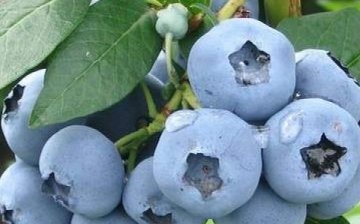

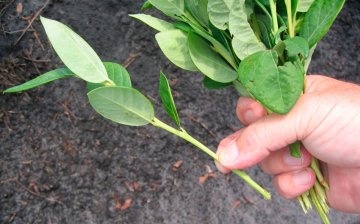
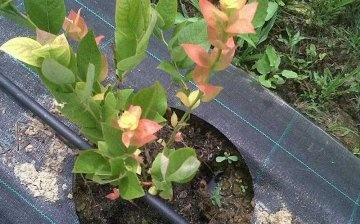
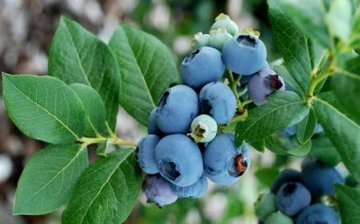

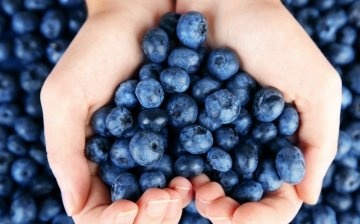







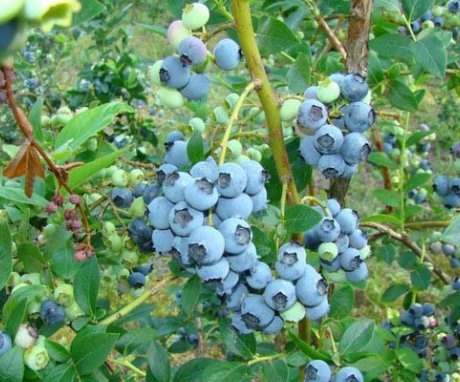
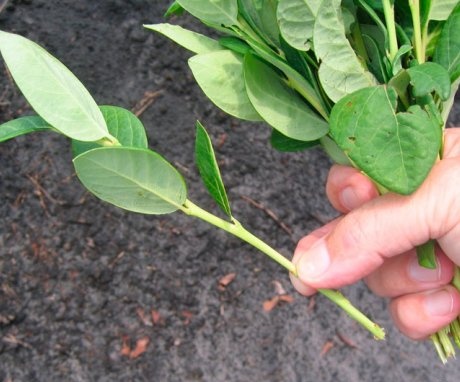
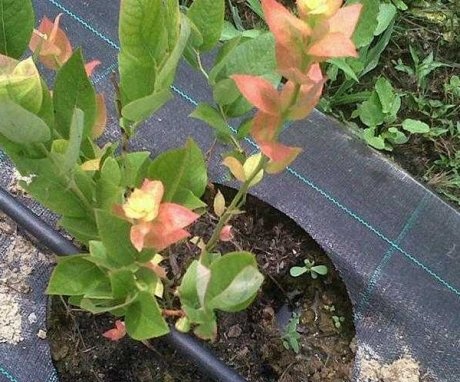

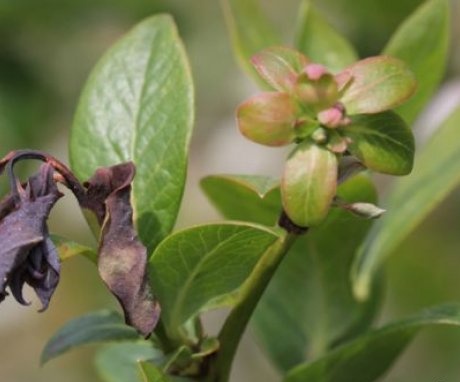
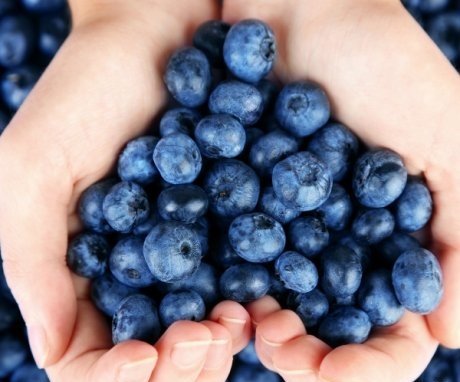
Blueberries are a very healthy berry, I often buy them, but they are not cheap. Of course, it would be nice to have such a bush on your site. The easiest way of reproduction is, of course, by dividing the bush or by branches, but I don't have friends who have blueberries, so I'll have to try from seeds.
Maybe this is a good berry, very useful for human health, containing many vitamins, but it doesn’t taste what many expect, it can hardly be called a delicacy. Perhaps I am confusing her with something else.
Blueberries have a perfectly acceptable taste (something can be compared to blueberries), it just gets worse if they lie for a long time. Therefore, you need to use it immediately from the bush, preferably in the morning. Instead (or before) a cup of coffee - tasty and healthy.
As for this particular blueberry variety, for our places the fear of recurrent frosts is a significant disadvantage. Other varieties, even when opened after winter, tolerate light frosts well.